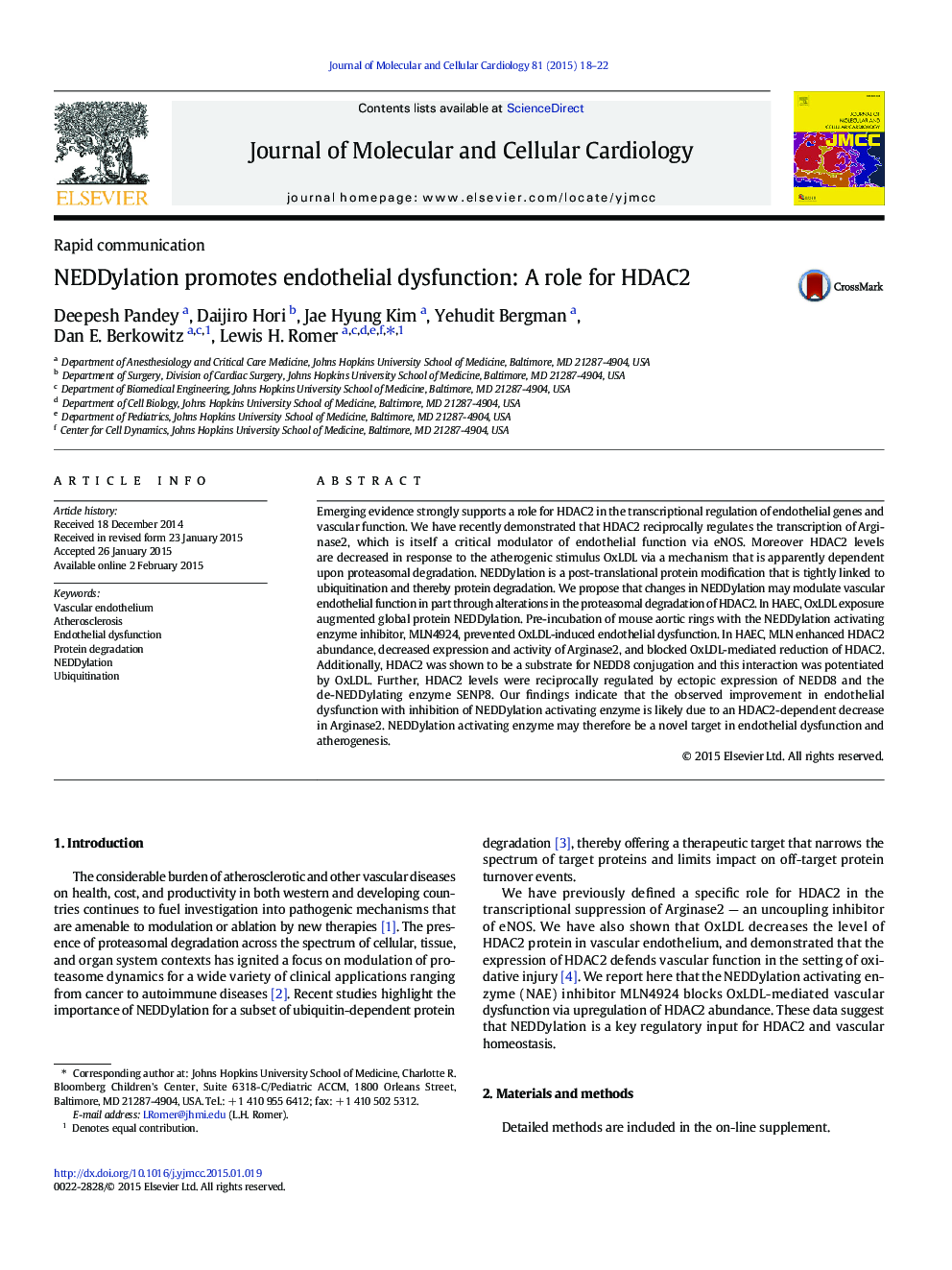| Article ID | Journal | Published Year | Pages | File Type |
|---|---|---|---|---|
| 2190493 | Journal of Molecular and Cellular Cardiology | 2015 | 5 Pages |
•OxLDL increases global protein NEDDylation.•The NEDDylation activating enzyme (NAE) inhibitor MLN4924 obviates OxLDL-induced vascular endothelial dysfunction.•Overexpression of exogenous NEDD8 decreases HDAC2 levels in HAEC.•These data introduce NAE inhibition as a novel approach to defend vascular function and slow atherogenesis.
Emerging evidence strongly supports a role for HDAC2 in the transcriptional regulation of endothelial genes and vascular function. We have recently demonstrated that HDAC2 reciprocally regulates the transcription of Arginase2, which is itself a critical modulator of endothelial function via eNOS. Moreover HDAC2 levels are decreased in response to the atherogenic stimulus OxLDL via a mechanism that is apparently dependent upon proteasomal degradation. NEDDylation is a post-translational protein modification that is tightly linked to ubiquitination and thereby protein degradation. We propose that changes in NEDDylation may modulate vascular endothelial function in part through alterations in the proteasomal degradation of HDAC2. In HAEC, OxLDL exposure augmented global protein NEDDylation. Pre-incubation of mouse aortic rings with the NEDDylation activating enzyme inhibitor, MLN4924, prevented OxLDL-induced endothelial dysfunction. In HAEC, MLN enhanced HDAC2 abundance, decreased expression and activity of Arginase2, and blocked OxLDL-mediated reduction of HDAC2. Additionally, HDAC2 was shown to be a substrate for NEDD8 conjugation and this interaction was potentiated by OxLDL. Further, HDAC2 levels were reciprocally regulated by ectopic expression of NEDD8 and the de-NEDDylating enzyme SENP8. Our findings indicate that the observed improvement in endothelial dysfunction with inhibition of NEDDylation activating enzyme is likely due to an HDAC2-dependent decrease in Arginase2. NEDDylation activating enzyme may therefore be a novel target in endothelial dysfunction and atherogenesis.
